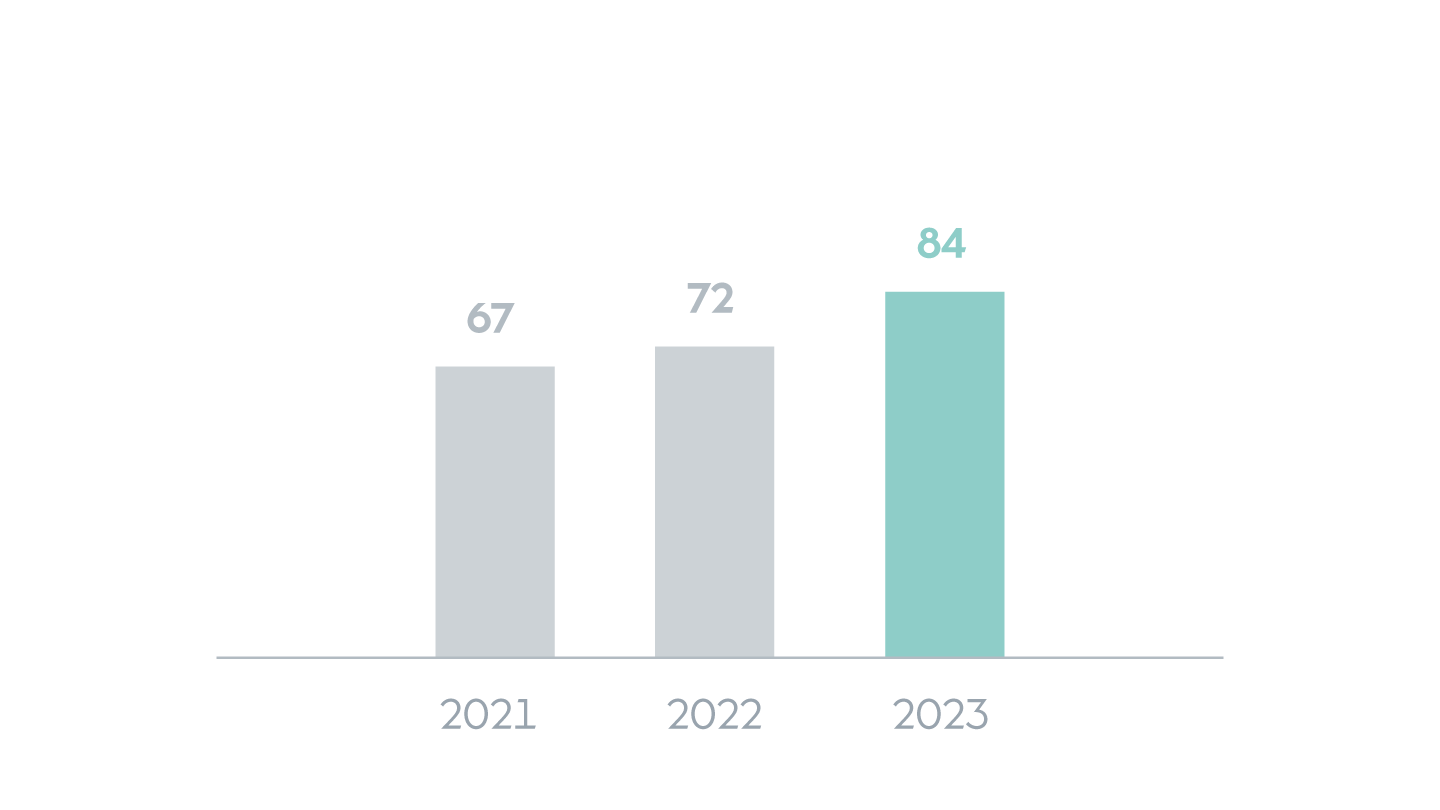To make the most of our resources, we’re looking at wind and solar farm design, material sourcing, how to use assets for longer – and how to ensure all renewable energy assets can be reused or recycled after we decommission them.
Why is circular resource use important?
As we work to deliver the global green energy build-out at the pace and scale demanded by science, we need to use raw materials such as steel, concrete, and aluminium. Many of these resources are already scarce and under pressure, so it’s crucial that we embrace the principles of circularity and find ways to use less, for longer – and reuse what we can, again and again.
“
By incorporating circular principles across our entire operating model, we work to eliminate waste, maximise the reuse and recycling of our key components and materials, and help nature to thrive.
The two main goals of our use of circularity are to ensure availability of critical raw materials, and to help ensure the green build-out happens in balance with nature by minimising the adverse environmental impacts that are related to extraction and processing of virgin resources.
What are we doing?
Our newest renewable energy assets have an average expected lifetime of 30-35 years, and up to 90 % of the total weight of the materials used to build them can be recycled. But we know we can go further. We’re working on three key areas that we as a developer believe we can best support in the widespread adoption of circularity within the renewables industry and beyond.
Designing and sourcing our way to a lower footprint: 75 % of our carbon footprint related to offshore wind assets comes from extracting and processing construction materials – with steel alone accounting for 50 % of this figure. By optimising how we design offshore wind farms, and by increasing our use of components made from recycled materials, we can reduce our reliance on virgin resources.
Optimising how we use assets and key components: The longer we keep an asset or component in operation, the less time and energy we spend decommissioning and replacing it. With that in mind, we’re improving the way we repair, reuse, and repurpose assets and components so we can extend their lifetime. For example, we’re exploring ways to give older offshore assets an extra decade of life.
Ensuring recyclability of assets upon decommissioning: We’re continuously finding new ways to recycle our renewable energy assets so we can feed in materials from old assets into the production of new assets, close the material loop, and create a circular value chain. We’re getting closer to achieving this. And though we still face some challenges with regards to solar PV modules and wind turbine blades, we’ll keep working until we find the right solution.
How are we doing?
We aim to send no wind turbine blades to landfill and to divert as much as possible of the waste we produce from disposal.

Total amount of waste diverted from disposal (%)
Latest updates from 2023
- We partnered with Vestas to procure wind turbine towers made of lower-emission steel and blades made from recycled materials in at least 25% of our joint offshore wind projects.
- DecomBlades, our co-founded recycling project, achieved a breakthrough by extracting high-quality glass fibers from old turbine blades, offering a key solution to our industry's waste problem.
- We joined the Coalition for Wind Industry Circularity (CWIC) to help establish a circular supply chain for reusing and refurbishing old wind turbine components, aiming to reduce the carbon footprint, alleviate supply chain pressure, and generate new jobs in the UK.
- We partnered with SOLARCYCLE for the processing and recycling of end-of-life solar modules from our U.S. projects, diverting materials from landfills and promoting a sustainable, circular approach in managing solar technology waste by reintroducing high-value materials into our supply chain.
- We expanded our commitment to achieving 100% reuse and recycling of solar panels to encompass our entire global portfolio.
What’s next?
In 2024, we’ll be incorporating our suppliers into our procurement processes through enhanced supplier relationship management, with the goal of incentivising the adoption of more circular methods within our supply chain.
We’re also dedicated to actively seeking partnerships that empower us to collectively address challenges associated with responsible resource use and circular practices.
As we’ve ceased development of Ocean Wind 1 and 2 in the U.S, we’ve started developing a plan for how to best reuse and repurpose the main components from the projects to recover their material and financial value.
Key information
Partnerships
- DecomBlades, a three-year innovation project that seeks to commercialise sustainable recycling routes for wind turbine blades, carried out by ten project partners from the wind and recycling industry as well as academia
- Salzgitter AG, a strategic partnership to explore the potential of recycling scrap from decommissioned wind turbines into the steel production process
International frameworks
- EU Waste Framework Directive
- Global Reporting Initiative 306: Waste 2020
Governance
Accountability lies with our Chief Operating Officer. Our QHSE Committee ensures that implementation is carried out by individual business units.
Policies
- Ørsted Policy for quality, health, safety, and environment (PDF)
- Ørsted Resource management policy (PDF)
These efforts contribute towards the following Sustainable Development Goal:
